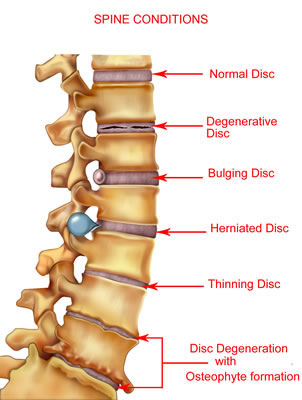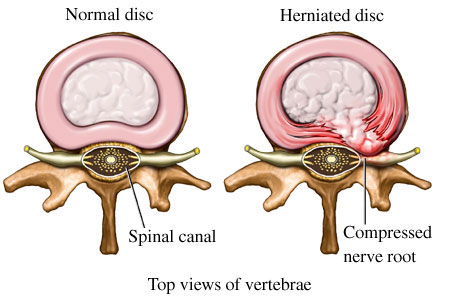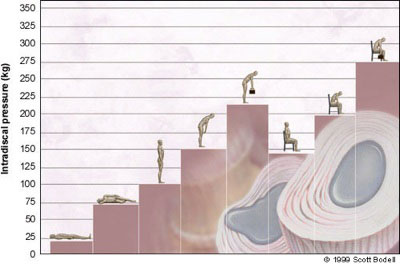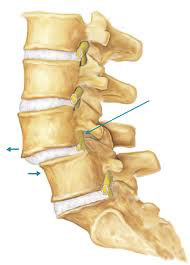Lower Back Pain (Part Two)
Description
Lower back pain varies from one person to another. The pain can have a slow onset or come suddenly. It can be intermittent, showing up from time to time, or continuous. In most cases, lower back pain resolves on its own within a few weeks.
Risk Factors
- Lifting heavy weights without a proper back or waist position. So if you perform continuous work in a bad position for the waist and overloading this area (straining).
- Certain rapid movements of the waist in rotation or quick bending / movements of the spine's extension (direction).
- Excessive sports activities done without adequate physical preparation.
- A sedentary lifestyle without physical activity or sports also increases the risk of developing a discopathy due to insufficient muscle support and spine protection.
- Repeated activities that strain the back. Many physical jobs require constant lifting, pushing, pulling, bending, or snake-like movements. Using safe movements and techniques can help protect the back.
- Weight. Being overweight increases the stress exerted on the discs of the waist as well as muscle weakness
- Frequent driving. Sitting for long periods, plus the vibrations from the car engine, can put pressure on your discs and back.
- Smoking. It is believed that smoking reduces the oxygen supply to the discs and causes faster degeneration.
- During old age as a consequence of weakening and degeneration of the discs
- Gender. Men between the ages of 30 and 50 are more likely to have a herniated disc than women
- Genetic factors related to early degeneration of tissues have also been postulated as a possible cause of disc deterioration (recent study, currently without clear conclusions).
Causes
There are many causes of lower back pain. Sometimes it occurs after a specific movement such as lifting a weight or bending. Age also plays a role in lower back pain.
As we age, our back 'ages' with us. The passage of years causes degenerative changes in the back. These changes can begin in your '30s - or even younger - and can make us prone to back pain, especially if we overdo activities.
These signs of aging, however, do not prevent most people from being productive and generally pain-free. We have all seen a 70-year-old running a marathon who undoubtedly has degenerative changes in their back!
Overactivity – Strains
One of the most common causes of lower back pain is muscle pain from over-activities. Muscles and ligament fibers can be overstretched or injured.
This comes after a game of golf or something else at the beginning of the season, or when we work a lot or shovel - cleaning snow in the yard in one day. We are all familiar with this "stiffness" and lower back pain - and in other areas of the body - that usually goes away within a few days.

DISC PROBLEMS
Disc Injury
Some people develop lower back pain that does not go away within a few days. This may mean that there is an injury to a disc.
Disc Tear or Rupture. Small tears in the outer part of the disc (annulus), sometimes occur with aging. Some people with a torn disc may not have any pain. Others may have pain that lasts for weeks, months, or even longer. A small number of people may develop continuous pain that lasts for years and is quite disabling. Why some people have pain and others do not is not well understood.
Herniated Disc. Another common type of disc injury is ‘slipped disc’ which in medical language is called a herniated disc.
A herniated disc is one of the common causes of back pain.
The most common symptoms of a lumbar herniated disc may be pain along the leg as well as loss of sensation along the leg; depending on the level of herniation, it leads to a sensory change in the area from the compressed nerve. Also, compression of the nerve root can cause a drop in muscle strength causing weakening of the foot and the whole leg.

How and why does this disc herniation happen?
Each ring is connected to one another with the intervertebral disc. The intervertebral disc is a cartilage plate which has ligaments on the side that hold the disc between the rings. The role of the disc is to allow the human spinal column to move in all directions. As a result of different movements that a person makes during work and their own life activities, it leads to injury of the disc or degeneration of the disc from a soft mass to a harder mass.
Also, as a result of these degenerations, but also some lifting weights or some injury, the ‘slipping of the disc’ or herniated disc appears. The herniated disc moves towards the surrounding nerve structures where it can cause direct or indirect damage to the nerve elements or even the spinal cord.
The extent of damage caused by the disc depends on the level of the ring, but also on the direction of the disc's exit. This disc sometimes goes sideways where the nerve roots are located causing severe lower back and leg pain. When the disc comes out medially towards the spinal cord, then besides pain, it can also cause sensory and sphincter disorders. In this case, the patient has urination problems and this is called cauda equina syndrome. In these cases, the indication for surgical intervention is urgent.
So a disc slips when its jelly-like center (nucleus) pushes against its outer ring (annulus). If the disc is very torn or injured, the nucleus may come out all the way. When the disc protrudes outwards towards the spinal canal, it puts pressure on the spinal sensory nerves causing pain.
Because a slipped or herniated disc in the middle of the back often puts pressure on nerve roots that go to the thigh, shin, and foot, pain often occurs in the buttocks and along the leg. This is the irritation of the sciatic nerve or sciatalgia.
A herniated disc often occurs from lifting weights, pushing, pulling, bending, or snake-like movements.
Disc Degeneration
With age, the intervertebral discs begin to deteriorate and shrink. In some cases, they may be completely destroyed and cause the facet joints to touch, rubbing against each other. Causing pain and stiffness.

This "wear and tear" damage to the facet joints is referred to as osteoarthritis. This can lead to other problems, including spinal stenosis.

I think that the description by the group of co-authors is readable for the interested parties. Thank you for your information
Sent by Anesti Pina, më 13 September 2013 në 10:36
Hello, I am Petriti. I had a problem with my back 5 years ago, which was a result of the work I did laying tiles, during which I spent almost 40 days barely able to get in and out of a car. However, it passed after I accidentally pulled an electrical cable with a lot of force, and the pain immediately subsided, and I haven't felt it since for 5 years. But today, I lifted a weight of almost 10 kg and my back started hurting again, making it hard for me to move. Please tell me some way to relieve this pain, Petriti
Sent by Petrit Zefi, më 30 October 2013 në 03:30
Petrit, I have had the same problem with the tiles after doing a lot of physiotherapy, the pain wouldn't go away, and it even gripped my leg. In 2010, I had surgery in Athens, and now I am much better, I don't have leg pain. Sometimes, when I work for extended hours, it hurts again, but after a short rest, the pain goes away. If you have leg pain or numbness in your fingers, I advise you to visit a neurosurgeon as soon as possible before the nerve weakens. You might need surgery for the operation to be 96% successful; the nerve shouldn't lose the strength of the leg, it's a matter of time
Sent by shkelzen, më 09 January 2014 në 16:09
I am Gjergji and I have been suffering from back pain for 4 months, I have numbness in my left buttock and I always feel it on the same side. Please give me some advice on how to get it to pass, thank you
Sent by gjergji, më 10 December 2014 në 07:56